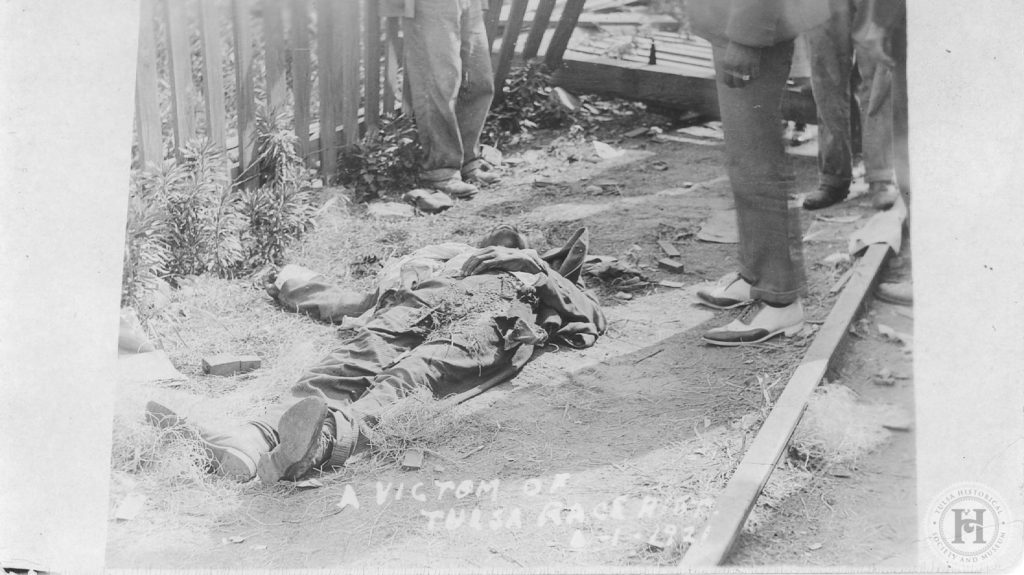The Tulsa Massacre was one of the worst acts of domestic terrorism in US history, decimating the thriving, Black community of Greenwood. Valiant efforts by Greenwood residents to defend their community from this brutal attack were unsuccessful as they were substantially outnumbered and outgunned.
In the end, the angry white mob that invaded Greenwood destroyed nearly 1,500 homes and businesses, reducing the approximately 40-square-block area (4 square miles) to ash and rubble. Estimates of the total property damage have amounted to around $50 to $100M in 2021 dollars.[i] Worse, hundreds died and thousands more were injured. Still, more than 9,000 Black people were left homeless—with many forced to flee their hometown and never look back. Some were simply never heard from again. Those who managed to avoid physical injury were left destitute, forever traumatized by the horror of what they had experienced and witnessed—a generational burden that they and their descendants continue to carry.
The Massacre was not simply an act of domestic terrorism; it was an economic, social, and cultural human-made disaster for the Greenwood neighborhood, a community of the City of Tulsa. The wanton violence perpetrated by the large, angry White mob—which included members of the Tulsa Police Department, the Tulsa County Sheriff’s Department, and the National Guard, as well as other city and county leaders—during the Massacre did more than deprive hundreds of Greenwood residents of their lives.
Massacre survivors were robbed of their homes, personal property, livelihoods, dignity, community leaders, sense of safety, physical security, economic capital, and consequently the exercise of their right to self-determination. The basis upon which they created this successful community—the land, freedom, and wealth that contributed to the making of Greenwood—was robbed of them as well. [1] The violence of the Massacre tore families and social networks apart, even contributing to the creation of a vacuum in the community’s leadership structure.
Although the residents of Greenwood were the innocent victims in the Massacre’s immediate aftermath, the Greenwood survivors were blamed for the violence and destruction that annihilated their community.23 Approximately 6,000 of them were forcefully detained in internment camps guarded by armed men and forced to work for the City.24
In the immediate aftermath of the Massacre, survivors were blamed for the violence and destruction that annihilated their community. Additionally, rather than attempting to mitigate the effects of the Massacre, City, County, Chamber officials and local white businessmen sought to capitalize on the Greenwood community’s losses (many of which they actively participated in causing), making every effort to prevent the reconstruction of Black Wall Street.
[1] See Okla. Const. Art. II, § 2.
[i] Natalie Chang, The Massacre of Black Wall Street, The Atlantic, https://www.theatlantic.com/sponsored/hbo-2019/the-massacre-of-black-wall-street/3217/.





